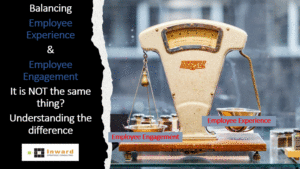The Importance of Employee Recognition: Top 5 Reasons
Employee recognition plays a crucial role in fostering a positive work environment and driving employee engagement and productivity. Acknowledging and appreciating employees’ efforts and achievements not only boosts their morale but also creates a sense of value and purpose. In this article, we will explore the top five reasons why employee recognition is important in today’s workplace.
1. Motivation and Morale Boost:
One of the primary benefits of employee recognition is its ability to motivate and boost morale. When employees receive recognition for their hard work, they feel appreciated and valued, which increases their motivation to perform at their best. Recognition can come in various forms, such as verbal praise, written commendations, or rewards. By acknowledging employees’ contributions, organizations create a positive work atmosphere that fosters job satisfaction and encourages individuals to go above and beyond in their roles.
2. Increased Employee Engagement:
Recognition plays a significant role in improving employee engagement. Engaged employees are more committed to their work and feel a stronger sense of loyalty towards their organization. When employees receive recognition for their accomplishments, they feel more connected to their work and the company’s goals. This sense of engagement leads to higher levels of productivity, increased job satisfaction, and improved overall performance. Employees who feel valued and appreciated are more likely to go the extra mile, resulting in enhanced organizational success.
3. Retention and Reduced Turnover:
Employee recognition is a critical factor in employee retention. When employees feel recognized and appreciated, they are more likely to stay with an organization. Recognizing employees’ achievements demonstrates that their contributions are valued, creating a sense of loyalty and commitment. In contrast, a lack of recognition can lead to disengagement and dissatisfaction, making employees more susceptible to leaving for better opportunities. By implementing effective recognition programs, organizations can reduce turnover rates, saving valuable time and resources associated with recruitment and training.
4. Enhanced Team Collaboration:
Recognition not only impacts individuals but also improves team dynamics. When team members witness their colleagues being recognized, it creates a positive ripple effect. It fosters a culture of appreciation and collaboration, where employees celebrate each other’s successes. Recognizing teamwork and collaboration further strengthens the bonds between team members and encourages them to work together more effectively. This enhanced collaboration leads to improved problem-solving, innovation, and overall team performance.
5. Positive Organizational Culture:
Employee recognition is a cornerstone of a positive organizational culture. When recognition becomes an integral part of an organization’s values and practices, it shapes the overall work environment. Employees who feel valued and appreciated are more likely to exhibit positive behaviors, such as supporting their peers, displaying initiative, and offering innovative ideas. A culture that prioritizes recognition fosters trust, loyalty, and a sense of belonging among employees. This positive culture attracts top talent, enhances the organization’s reputation, and creates a desirable workplace where employees thrive.
Conclusion:
Employee recognition is a powerful tool that drives motivation, engagement, and retention. By acknowledging employees’ efforts and achievements, organizations can create a positive work environment that fosters productivity and employee satisfaction. From boosting morale and motivation to improving teamwork and collaboration, recognition has far-reaching benefits. Organizations that prioritize employee recognition reap the rewards of increased engagement, reduced turnover, and a positive organizational culture. By implementing effective recognition programs, organizations can unleash the potential of their employees and achieve long-term success in today’s competitive business landscape.

































